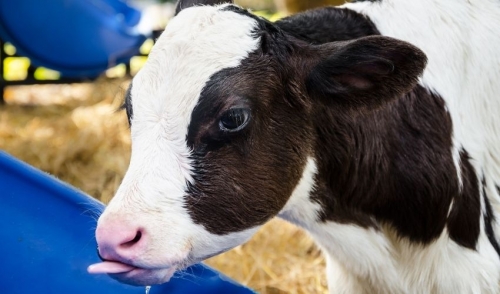{article.name}
Stay Informed
Keeping Your Cattle, Horses, and Backyard Flock Hydrated

- Share this:
- Share on Facebook
- Pin on Pinterest
- Tweet on Twitter
Proper hydration is essential to keep all your livestock healthy in any season, from the blistering summer months to the icy depths of winter. By knowing how best to keep your cattle, horses, and backyard flock hydrated, you can protect their health and ensure every animal has adequate access to clean, fresh water.
Why Hydration Matters
Adequate hydration is critical for many bodily systems and clean, fresh water is necessary for good health. Water is an essential part of efficient digestion, joint and muscle lubrication, body insulation, waste elimination, delivering nutrients to cells throughout the body, skin and coat condition, body temperature regulation, blood pressure regulation, show performance, milk and egg production, and more. Without proper water, animals can dehydrate in any season, no matter what the climate or temperature. Fortunately, there are many easy ways to keep livestock hydrated.
Tips to Keep Your Livestock Hydrated
All animals will drink if water is provided and easily accessible, so long as the water is attractive for drinking and is not fouled. To keep cattle, horses, and chickens hydrated…
- Provide clean, fresh water at all times. Troughs, dishes, and tanks should be cleaned regularly to ensure there is no buildup of algae or residue that could cause poor water quality that would make the water distasteful.
- Provide multiple water sources at different locations and levels so all animals can easily access the water in whatever way they prefer to drink. Multiple water sources will also lower crowding around drinking areas so all animals can drink comfortably.
- Cool water is typically preferred, and the water should not be overly warm or icy cold. Blocks of ice can be added to summer troughs to keep the water cool, while heaters can be used in winter to take away the icy chill of available water.
- Summer water supplies should be positioned in the shade to help keep the water cooler. This will also help minimize algae growth or insect infestations in the water that could be harmful to thirsty livestock.
- Inspect troughs, pipes, and valves regularly to ensure they are operating properly and there are no clogs or rust buildup that can limit the water supply or foul the taste of the water. Have backup systems in place if necessary in case of any water flow interruptions.
- Consider flavoring water with healthy fruit juice or feed supplements to improve the taste and encourage greater drinking. This can be especially helpful if the animals must travel and may be reluctant to drink from a different water source.
- Inspect natural water sources such as ponds, lakes, or creeks regularly to be sure they are not contaminated with potentially toxic algae, oil pollution, or other spills that could be harmful to your animals. If needed, block off contaminated water supplies to avoid problems.
- Offer moist feed and water-rich foods to help keep your animals hydrated as they eat. Mashes are a good option for horses and cattle, as well as access to healthy green forage. For chickens, offering a melon to peck can entertain the birds as well as keep them hydrated.
- Provide frozen treats in the summer to give your animals some stimulation as well as extra water. Berries or feed pellets frozen in ice can be a good option, or an ice block for livestock to lick when they want.
- Watch your animals’ drinking habits closely, and take steps to minimize bullying or monopolizing behavior that may restrict some animals’ access to the water. If necessary, separate more dominant animals so others have an equal chance to drink adequately.
Ideally, use several different tactics to keep cattle, horses, and chickens hydrated. The better access your animals have to water in different ways, the easier it will be to satisfy their thirst and ensure they have plenty of water at all times.
Recognizing Dehydration
Even with multiple hydration techniques, animals can still become dehydrated. Be aware of dehydration symptoms, including general lethargy, loss of coordination, dry and sunken eyes, thick saliva, loss of appetite, elevated heartrate, constipation, and loss of skin elasticity. When animals begin exhibiting these symptoms, it is important to treat their dehydration quickly. Separating dehydrated animals so they can have easier access to water is a good first step, but if they do not rehydrate quickly, consult your veterinarian for emergency treatment.
Water is critical for all animals’ good health, and taking different steps to provide adequate hydration can help ensure all your cattle, horses, and chickens have proper water for good health and comfort. The more steps you take, the easier it will be for all your livestock to stay properly hydrated, and the healthier all your animals will be.
Special Offers


Comments